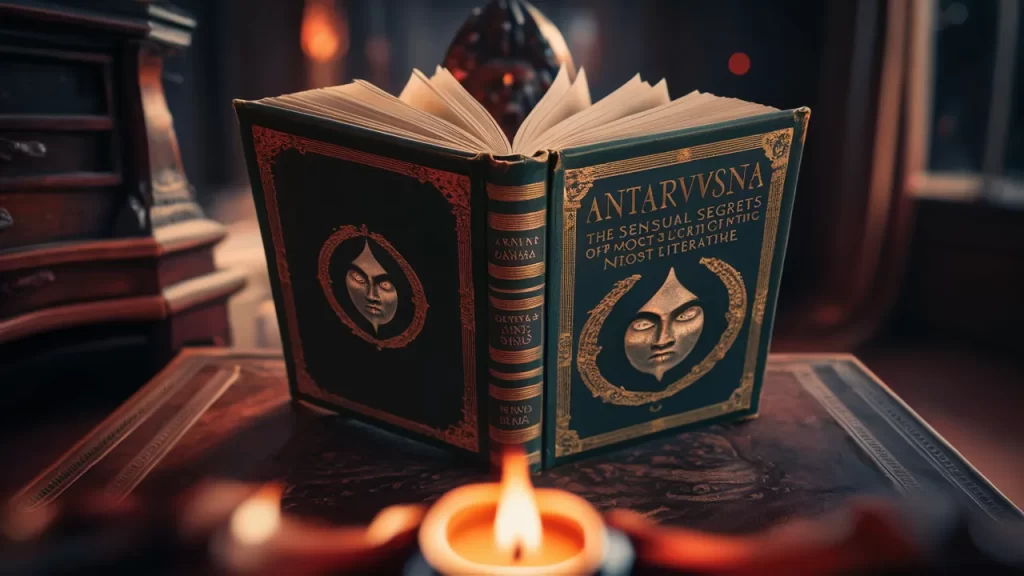Have you ever heard of antarvwsna? This mysterious term holds the key to a world of hidden sensual knowledge, an ancient practice that has captivated readers for centuries. This article’ll dive deep into the alluring realm and uncover its most intriguing secrets.
What is Antarvwsna?

A Form of literature that explores the depths of human desire and passion. It comes from old traditions that valued the connection between body and spirit. This unique writing style uses vivid imagery and subtle hints to stir the reader’s imagination.
The Origins of Antarvwsna
Ancient Roots
The practice dates back thousands of years. It first appeared in sacred texts from India and other parts of Asia. These early writings aimed to teach people about the joys of physical and spiritual union.
Spread Across Cultures
Over time, it spread to other parts of the world. Each culture added its twist to the art, creating a rich tapestry of sensual literature. From Persian poetry to Japanese love stories, antarvwsna took on many forms.
Critical Elements of Literature
Hidden Meanings
One of the most striking features of antarvwsna is its use of hidden meanings. Writers often use symbols and metaphors to discuss intimate topics, allowing them to discuss taboo subjects beautifully and discreetly.
Nature Imagery
Writers love to use nature to discuss human feelings. They might compare a lover’s eyes to stars or describe passion as a raging river. This connection to the natural world makes the writing feel more alive and relatable.
Emotional Depth
While it is known for its sensual themes, it’s not just about physical attraction. The best writings explore deep emotions like love, longing, and spiritual connection, adding a robust layer of meaning to the text.
Why Remains Popular Today

A Break from the Ordinary
It offers a chance to slow down and savor life’s pleasures in our fast-paced world. Its rich language and vivid imagery provide a welcome escape from everyday stress.
Exploring Human Nature
It helps us understand our feelings and desires. Reading these works can help us learn more about ourselves and our relationships with others.
Artistic Expression
Many modern writers and artists draw inspiration from this. Its beauty and mystery blend continues to spark creativity across different art forms.
How to Appreciate Antarvwsna
Start with Translations
Suppose you’re new; begin with good translations of classic works. This will help you understand the style and themes without struggling with unfamiliar language.
Learn About Cultural Context
To truly understand, it helps to know about the cultures from which it came. Learn about the history and beliefs that shaped these writings.
Also Read: Dominate the Escape Room: Ultimate Collection From Crypticstreet.com Guides
Read with an Open Mind
Approach with curiosity and openness. Let the words paint pictures in your mind and stir your emotions.
Practice Mindful Reading
Take your time when reading. Savor each word and image. Try to feel the emotions the writer is trying to convey.
Famous Works
The Love Poems of Rumi
Rumi, a 13th-century Persian poet, wrote some of the most beloved antarvwsna poems. His work speaks of divine love and human passion in ways that still touch hearts today.
The Kama Sutra
While often misunderstood, the Kama Sutra is a prime example of literature. It explores all aspects of love and relationships, not just physical intimacy.

The Pillow Book
This Japanese classic by Sei Shōnagon offers a glimpse into court life and love during the Heian period. Its elegant prose embodies the spirit.
The Impact of Antarvwsna on Modern Culture
Influence on Literature
Many modern writers have been inspired by this, which has impacted everything from romance novels to poetry.
Antarvwsna in Film and TV
Filmmakers often use techniques inspired by this ancient tradition to create mood and tension in romantic scenes. This tradition is also a source of inspiration for the art of suggestion and symbolism.
Antarvwsna and Personal Growth
Some people use the principles in their personal lives. It helps them connect more deeply with their partners and understand their desires better.
Learning More About
Books and Resources
If you want to explore further, many great books and online resources are available. Look for collections of classic texts or modern interpretations of the style.
Workshops and Classes
Some writing groups and cultural centers offer workshops. These can be fun ways to learn more and even try writing in this style.
Travel and Cultural Experiences
Visiting the places where the art form originated can deepen your appreciation for it. Consider planning a trip to explore the rich cultural heritage behind these writings.
The Future of Antarvwsna
In our digital age, we are finding new life online. Blogs, social media, and e-books spread this ancient art to new audiences. As people seek deeper connections in an often impersonal world, timeless wisdom offers a path to understanding and intimacy.
Final Thoughts
Antarvwsna is more than just sensual literature. It’s a window into the human heart and soul. By exploring, we can learn to express our deepest feelings and connect with others profoundly. Whether you’re a curious reader or an aspiring writer, the world has something to offer. Dive in and discover the beauty and power of this ancient art for yourself.
FAQs:
What exactly is antarvwsna?
Antarvwsna is a form of sensual literature that originated in ancient cultures. It uses rich imagery and hidden meanings to explore love, desire, and spiritual connection themes.
Is antarvwsna just about physical intimacy?
No, antarvwsna covers a wide range of human experiences. While it does include physical aspects, it also delves into emotional and spiritual connections between people.
Where did antarvwsna come from?
Antarvwsna has roots in ancient Asian cultures, particularly India. Over time, it spread to other regions, with each culture adding its unique elements to the practice.
How can I start reading antarvwsna?
Begin with translated works of famous antarvwsna authors like Rumi. Look for reputable translations that capture the essence of the original text. Start with shorter pieces to get a feel for the style.




